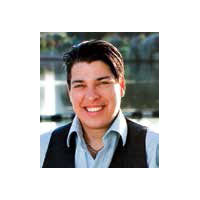
By Rebecca Kaplan, Oakland City Councilmember At-Large–
The housing situation in the Bay Area and elsewhere in California is problematic. Market rents are too expensive for most longtime residents of Oakland to pay. There simply is not enough affordable housing being built to match the demand. Homelessness has become a problem that is too big for even the most ambivalent to ignore. Our neighbors have been displaced from apartments or houses and forced out of the city or onto the streets.
The pandemic has exacerbated the problem. And many decades of exclusionary zoning have prevented the construction of a larger number of housing units that are affordable to more people, and have perpetuated racial inequities. We need more housing options for all in our communities, and to ensure that these efforts also prevent displacement and protect our communities.
I have called for an effort to undertake changes to our zoning, to allow a wider range of more affordable housing options in more places. Exclusionary zoning is being reconsidered in many cities, including Sacramento and Berkeley, and now also Oakland, to analyze how the City of Oakland could implement such a change in zoning density by allowing the building of four-plexes in areas that have historically been limited to only single-family residences.
If we build four-plexes in areas previously zoned for single family residences, especially in high resources areas near public transportation, we help address the need for additional housing. While no one solution can address all of these problems, the shortage of affordable housing is a need that must be addressed.
There is an additional benefit to changing the zoning to allow four-plexes: the equity it brings. Single-family zoning has been used as a tool of racial and ethnic exclusion from the time these neighborhoods were originally planned. Redlining and other exclusionary tactics on the part of realtors and bankers reinforced the original intent to keep these neighborhoods segregated. By studying the four-plex model, which would also examine how not to displace existing tenants from their homes due to building four-plexes, we are creating the opportunity to inject equity into a housing process where it has been sorely lacking.
The study will also consider certain unavoidable realities. Wildfire is an ever-present danger for certain areas of the city. Therefore, the impact of fire risk and other topographical and geographic limitations will also be factored in the analysis for study.
I am thankful to my colleagues for their unanimous vote in support of my proposal at our meeting on March 16—to launch a study process with community input to advance this effort. In addition, we appreciate the tenants’ rights and affordability advocates who are helping to contribute vital components to this effort, as we work to bring about policies that are both pro-housing and pro-justice.
As we look to expand housing options, we must also include provisions to prevent displacement and provide affordability. The timing is good as other cities are also exploring this model, and we can work collaboratively to adopt effective practices. We must consider a full range of solutions to solve the housing issues that face the city and our region.
Councilmember At-Large and Council President Rebecca Kaplan was elected in 2008 to serve as Oakland’s citywide Councilmember; she was re-elected in 2016 and 2020. She also serves on the Alameda County Transportation Commission (ACTC). Follow Councilmember Kaplan on Twitter @Kaplan4Oakland ( https://twitter.com/Kaplan4Oakland ) and Facebook ( https://www.facebook.com/Kaplan4Oakland/ ).
Published on March 25, 2021
Recent Comments